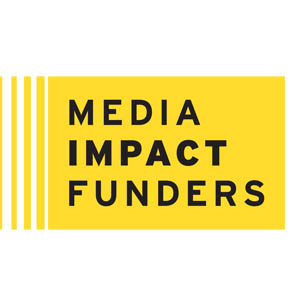
This year’s Media Impact Forum placed special emphasis on radio in the context of community-making media and creative expression. As a complement to that event, we invited funders to join us last week for a conversation on high-impact radio and audio journalism.
Radio may be one of the oldest forms of mass media, but its reach is growing. Broadcast radio listenership has held steady over the past decade, while online radio and podcasting listenership continues to climb, according to the Pew Research Center. Today, journalists must meet people where they are, and one powerful way to reach them is through radio and audio storytelling. In a recent article for the Chronicle of Philanthropy, MIF Executive Director Vince Stehle writes that grantmakers “could be doing even more to support radio programs” if they recognized how vibrant the medium really is.
Watch the webinar below:
We heard from:
- MIF consultant Sarah Armour-Jones, who highlighted some of the most interesting data points and trends in our new report on audio and radio grantmaking. For example, funding for audio has tripled since 2009, and radio actually receives more philanthropic funding than TV.
- Ju-Don Marshall, Chief Content Officer for WFAE public radio in Charlotte, N.C., talked about WFAE’s amazing She Says podcast and how it has changed the way local law enforcement investigates sexual assault. The podcast follows a sexual assault case for more than a year to unwrap the case of “Linda,” an N.C. woman assaulted in 2015. The storytelling focuses on how the police interacted with Linda and what can be done differently moving forward.
- Diane Kaplan, President and CEO of the Rasmuson Foundation, talked about the foundation’s support for community radio and audio content as a way to broaden the range of stories that are told about Alaska Native people. In particular, Kaplan mentioned a podcast called Coffee and Quac, which aims to explore Native life in urban Alaska.
- Vaishalee Raja of the James Irvine Foundation talked about grantmaking to local public radio stations to provide local news and information in underserved areas of California. The foundation is trying to “establish a consistent drumbeat so people are hearing about issues of inequality on a regular basis,” Raja said.
This was our May Journalism Funders Network webinar. Every month, as part of our work with the Journalism Funders Network, we host a webinar to help funders find common points of entry to make their work effective and efficient through strategic partnerships. All funders can—and are encouraged to—participate in these calls even if they are not a part of the Journalism Funders Network. Learn more.
